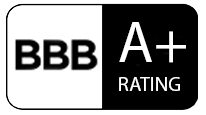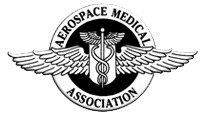FAA cardiovascular evaluations usually require a maximal stress test which is typically performed on a treadmill. Insufficient performance on this test is often the reason for denial of an FAA medical certificate. While there is an infinite number of things which constitute insufficient performance, the most common are: insufficient work load achieved, insufficient heart rate achieved, insufficient blood pressure achieved, adverse EKG or adverse symptoms.
Many of these problems can be prevented with proper conditioning. Pilot Medical Solutions provides feedback to our clients to assure proper fitness is achieve prior to taking a stress test required by the FAA. The conditioning program below is designed to provide pilots with general information to prepare for this test.
A customized conditioning program is just one of the many personalized components of our case management service. MORE
Conditioning for the FAA Treadmill Stress Test This article was originally published in the Federal Air Surgeon’s Medical Bulletin
The American College of Sports Medicine recommends a medical examination and exercise testing prior to participation in vigorous exercise for all male adults over 40 and females over 50. Consult your physician before beginning this conditioning program. Do not begin this program unless you have been in a walking regime for at least six weeks. Any parameter under evaluation or treatment by your physician such as: blood pressure, EKG, etc., should be monitored during exercise. If you are taking a beta blocker or other medication which may affect your heart rate, the perceived exertion scale* should be used to determine intensity. When taking the FAA Stress test, your physician usually will usually discontinue heart-rate-limiting medications to achieve maximum heart rate.
The FAA requires all applicants taking the maximal stress test to demonstrate a minimum functional capacity equivalent to completion of stage III of the Standard Bruce Treadmill Protocol and that you achieve your age predicted maximum heart rate. Conditioning may dramatically enhance your chance of a successful test.
The level of exercise during stage III of Bruce protocol is equal to the following activities:
| RUNNING |
|
|||
|
|
|
|
|
| STAIR CLIMBING 55 feet per min (7 lights on a Stairmaster®) or at least 30 steps per min on a step height of 36cm or greater. |
||||
| BIKING While this is not a recommended to condition for a treadmill test; the intensity of 225 watts is considered equivalent for a 176 lb. subject. |
||||
Before you start
1 Acquire the use of a treadmill with the capability of at least 8% incline.
2 If your physician agrees to discontinuation of cardiovascular medications the heart rate method will be accurate if not utilize the Rating of Perceived Exertion (RPE) scale*.
Do not discontinue medications or begin this routine without your physicians consent. Heart rate monitor watches with a chest strap are ideal and any good stop watch or treadmill timer will work to keep time.
3 Calculate 70% of your max heart rate [(220 – age) x .7 = 70% Max Heart Rate or Target Heart Rate]
Start the three minute timer and begin walking on a treadmill and slowly increase the speed to 3.4 mph with 0 %grade during the first 3 minutes. Reduce speed if necessary to maintain Target Heart Rate. Do not increase the grade/incline until you can maintain 3.4mph & 0%grade. Increase the grade/incline 2% each 3 minutes until you establish a heart rate equivalent to 70% of your predicted max heart rate or 3-5 on the Perceived Exertion (RPE) scale. Continue to walk at this heart rate making adjustments in incline if necessary. Walk 3-5 times per week for 25-45 minutes. If you are de-conditioned limit your time to a total of 10 – 12 minutes the first week. During the second week each exercise session should last 15-25 minutes. Most exerciser’s, who can exercise at 3.4mph and an incline of 8% while maintaining a heart rate in the 70% heart rate zone, can be reasonably assured of completing the FAA’s required level of exercise.
Do not exercise at intensities greater than 6 on the RPE scale or 70% of your maximum age predicted heart rate without the supervision of a qualified health professional.
*Rate your overall exertion, not just the fatigue in one area of your body. In addition you should comply with any specific level recommended by a health professional knowledgeable in your condition.
|
PERCEIVED EXERTION |
|
|
HOW DOES THE EXERCISE FEEL |
RATING |
|
|
Basic Fitness | Federal Air Surgeon Bulletin | Flight Fitness Quiz



